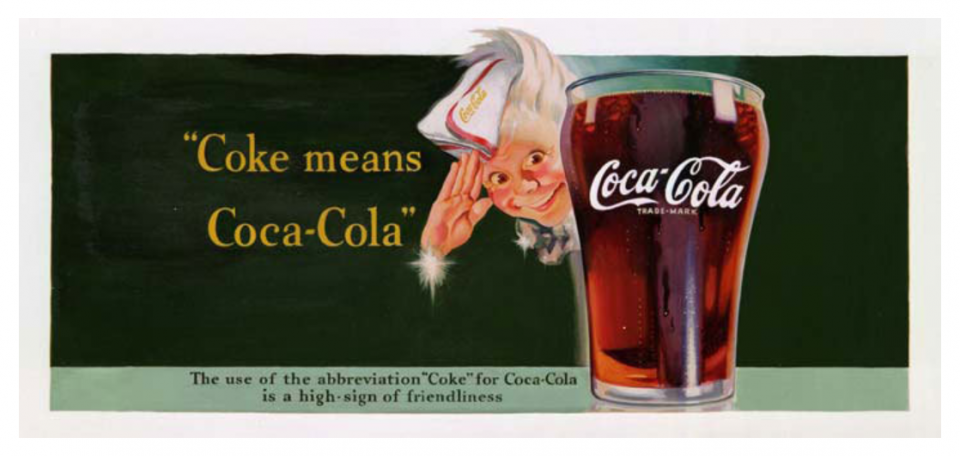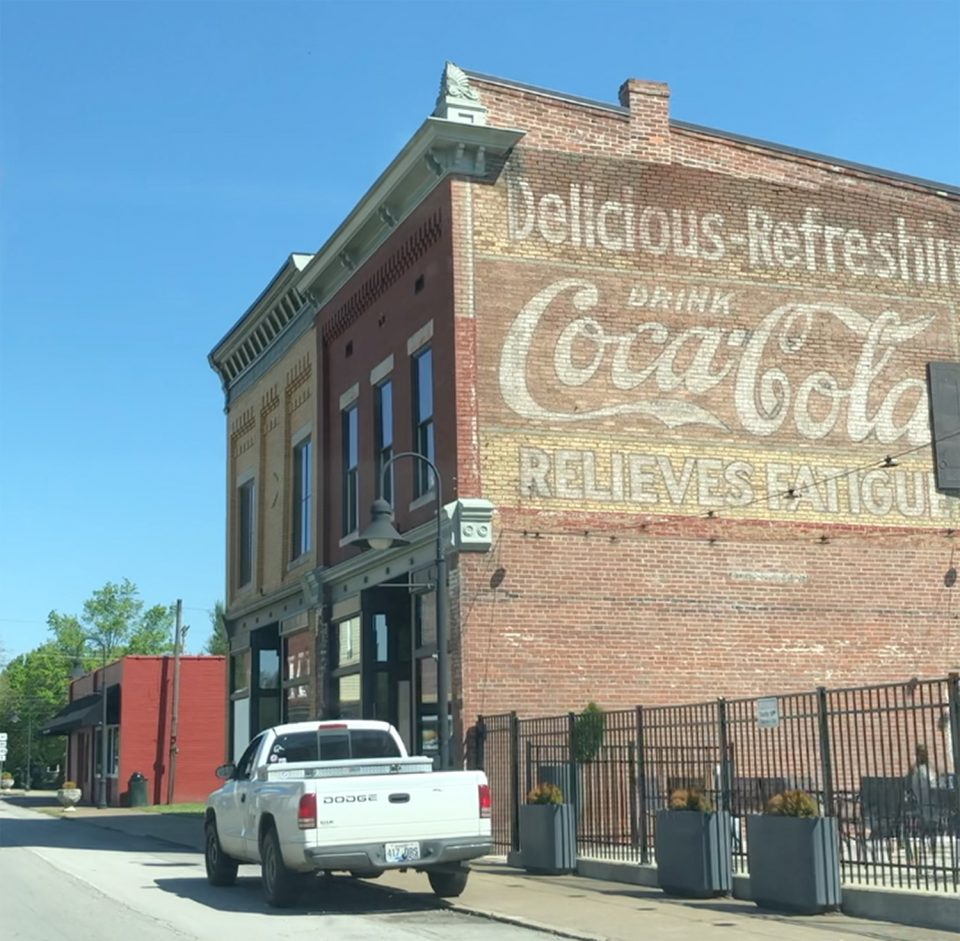The Coca-Cola character “Sprite Boy” helped me place a timeframe on the creation of this old wall ad
I walk around a lot of small towns with old buildings that feature fading antique wall ads, and while I see all kinds of brands and products, of course Coca-Cola is the most ubiquitous.
I recently spotted this old Coca-Cola wall ad at the intersection of Washington and Grove in Vicksburg, Mississippi, and I particularly love the ones that get to this level of peeling, fading, grungy glory. I was curious how old this ad might be, so I researched it. I found a great article from the Atlanta Journal Constitution that was helpful in dating this ad.
This ad features a character called Sprite Boy, which is separate from the soda called “Sprite” that Coca-Cola introduced in 1961. The Sprite Boy character was Coke’s first character, and he’s an elfin figure that was introduced in the 1940s. Sprite Boy never had a body, only a head and hands. Sprite Boy was depicted two ways, either wearing a bottle cap on his head or wearing a paper hat like those worn by soda jerks of the era.
Coca-Cola had a problem — people were calling it “Coke,” and the company (which is notoriously defensive of its brands) wasn’t happy about it. However, by the 1940s, the Coca-Cola company decided to just give up the fight and embrace the nickname, and the Sprite Boy character was created to help them do that. He was used in ads from 1942 until 1953.


According to the AJC article, he was phased out in 1958, but still appears on licensed items. The character was designed by artist Haddon Sundblom, who later designed the famous Coca-Cola Santa Claus, which was so popular that it helped shape our modern ideas about what Santa Claus looks like.
Even though Sprite Boy had nothing to do with the soda brand Sprite, the development of Sprite Boy did help the company choose the name for Sprite, which was developed in Germany by Coke’s Fanta brand. The company liked the name for the soda, and because they owned the legal naming rights to Sprite Boy, they were able to easily secure the name Sprite.
Find artwork and books of Haddon Sundblom on Amazon
By the way, Sundblom was also a masterful painter of pin-up girls.
1950s television ad featuring Sprite Boy
More Coca-Cola wall ad history
The very first Coca-Cola wall ad still exists! It was restored in 1989 in Cartersville, Georgia, and has been authenticated by the Coca-Cola company.
Below is a direct quote from the Visit Cartersville website, where you can also see photos of the ad:
Listed on the National Register of Historic Places
The Coca-Cola sign on the east wall of Young Brothers Pharmacy in downtown Cartersville has been authenticated by the Coca-Cola Company as the first outdoor painted-wall advertisement for Coca-Cola. It dates back to 1894, when an industrious Coca-Cola syrup salesmen named James Couden put down his order pad and picked up a paintbrush to create the first-of-its-kind sign. This sign received the 1990 Georgia Trust Award for Preservation – 25 layers of paint were removed during the restoration to reveal the original sign. Open Monday-Friday 8 a.m.-6:30 p.m., Saturday 9 a.m.-2 p.m., Sunday 1:30-3:00 p.m.
Tip: Bring your camera for an excellent souvenir photograph each morning as the sun illuminates the sign from the east.
Wall ad in Guthrie, Kentucky, circa 1912

Thanks for reading.
Be sure to visit me on Facebook, Instagram or Pinterest, or on my website at keithdotson.com.
~ Keith
Note: This blog post contains Amazon links. I may receive a small commission on qualifying purchases.
